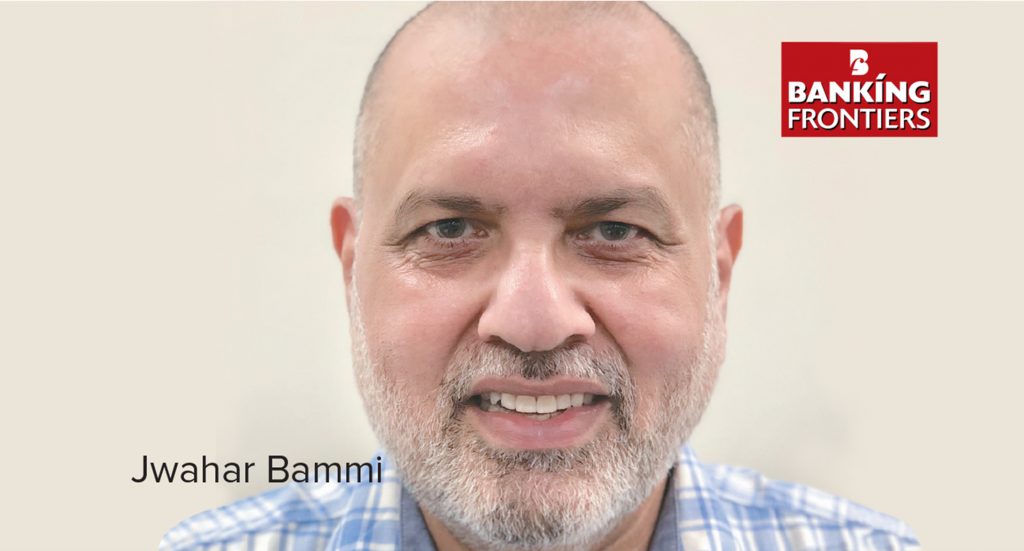
In an exclusive interaction with Ravi Lalwani, Jwahar Bammi, Principal Solutions Architect for Enterprise Fraud and Risk Management Solution at FIS, shares the details about the fraud & risk scenario in the BFSI industry:
Ravi Lalwani: Are new types of business frauds emerging among bank and non-bank lenders? If so, broadly in what direction?
Jwahar Bammi: Social engineering and insiders are the biggest threats for the bank and non-bank lenders. The financial companies need to have strong IT and business security to fight against the social engineering fraudsters who have capabilities to defeat all the lower level IT security of the BFSI companies.
Fraudsters are recruiting insiders of the bank and non-bank lenders. These financial institutions need to adopt cross-channel approach and look comprehensively across the enterprise. For example, in case of account takeovers, cross channel strategy helps to alert management about the fraud and it also helps in DNA of enterprise fraud solutions.
Enterprise tools help to provide wide view to the companies. They provide information about the wide activities in the company. Digital channels help in keeping pace with the real time transactions. Banks must provide a variety of financial instruments to its customers to survive in this digitalization era.
In which channels are fraud risks the highest for bank and non-bank lenders?
Online channels are increasing frauds in the financial companies. Introduction of online and mobile banking has initiated most of the external frauds in the financial companies. ATM frauds are on the rise in India. In fact, they are considered as the real fraud in India.
Due to the financial inclusion, public sector banks can reach out to the unbankable and rural population of India. Banks needs to move beyond the business rules and needs to create a viable strategy. In the last few years FIS has heavily invested on machine learning, we need more mechanism to be more productive. The ML tools help to learn patterns for fraud prevention and to defend those patterns.
What roles are being played by human intelligence and machine intelligence in countering such frauds?
Machine learning is still in its early stage; ML cannot minimize the need of human intelligence, it can only minimize the need of fraud analyst in the organisation. Only humans write the rules and they are good in picking up the patterns. ML technology cannot recognize the patterns like human beings who are way superior to ML, it involves lot of manual process and matrix for building up the manual process and only humans have that skills. Humans are not scalable and ML becomes important because it is scalable.
Given the wave of digital transformation and opening that is sweeping the financial sector, what approach should management adopt to keep the institution safe and secure?
In the digital revolution era customer don’t have patience, companies need to adopt the cross-channel strategy and layered approach for providing security to customers. For fraud detection, financial institutions need to adopt the combination of analytics, rules, threat monitoring and compliance; this helps companies to provide safety and security to its customers.
Give some details about the origin and features of FISCE model?
Considering the increasing volume and sophistication of cyber threats, the Federal Financial Institutions Examination Council (FFIEC) developed the Cybersecurity Assessment Tool (Assessment) to help institutions identify their risks and determine their cybersecurity preparedness. The assessment provides a repeatable and measurable process for financial institutions to measure their cybersecurity preparedness over time.
Endpoint Centric, Navigation Centric, User / Acct. Centric Specific Channel, User / Acct. Centric Multi Channel & Product and Entity Link Analysis are the five layers of the FFIEC Compliance – Layered Security model.
The five layers provides secure browsing, OOB authentication, transaction verification, endpoint device identification, location data and analysis of the session behaviour. It helps to points out anomalies, analyses mobile device location, monitors and analyses user and account behaviour, identifies anomalous behaviour using rules or statistical models, monitors account behaviour across channels, correlates alerts, enables analysis of relationships among internal, external entities and their attributes (eg users, accounts, machines). All these features of the FFIEC model helps BFSI companies in risk management and to reduce frauds.
Which technology FIS will be focusing in future?
Social engineering is a big threat for the BFSI companies and they need to adopt comprehensive strategy to provide security to customers. We will be focusing on the hybrid detection strategy – it helps to examine the real-time frauds for the banks and non-bank lenders, it also helps to reduce the online frauds. FIS will be continuing to invest on machine learning technology in the coming years.
——————————-







